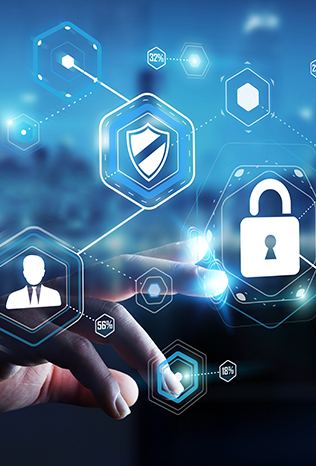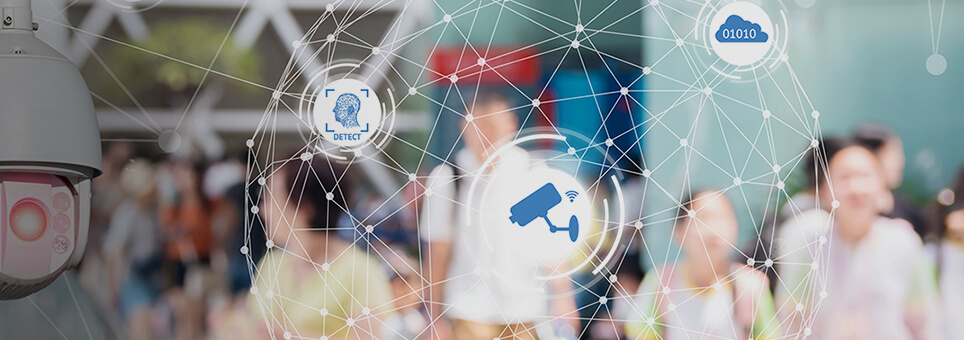By Daryl Sullivan, Senior Director of Ecosystems, Alliances and Business Development at Hitachi America
We are in a time of escalating violence, natural disasters and other unanticipated dangers to the public. For example, in the United States, crimes involving lethal weapons are on the rise, creating increasing concern for law enforcement agencies.1 It’s more important than ever that first responders are equipped with the information they need to make fast and accurate decisions when striving to protect people and possibly save lives.
Smart technology can help significantly improve the safety and security of a community’s citizens, but it is not a cure-all. Traditional law enforcement methods will always be necessary. Community policing and direct contact with citizens are essential components in creating a safer society. However, our public safety personnel do not always have access to the right resources and information to do their jobs effectively. The benefit of smart technology is that it builds on this strong foundation. Smart technology stitches together and analyzes disparate systems and data to yield greater insights and provides public safety personnel with additional critical tools that can anticipate, mitigate and resolve threats of all kinds more efficiently and effectively. The outcome is that both citizens and the first responders they depend on to keep them safe are better protected.
When a public safety crisis occurs, time is of the essence. The faster and more effectively first responders can assess and get to an incident, the more likely they will be able to save lives and minimize damage. Incomplete information can cause delays and jeopardize the safety of both citizens and first responders.
For fire, ambulance and police forces, delay can quite literally be the difference between life and death. Fortunately, recent developments in smart technology can substantially reduce the time it takes for first responders and other emergency personnel to respond to and resolve public safety incidents. See how communities are already using smart technology to keep their citizens safe.
So, what exactly does smart technology mean in the context of law enforcement and public safety? At its simplest, smart technology provides first responders with information they otherwise would not have - information that lets them know what they’re facing, how to most effectively approach a situation and which responses will lead to the best outcomes. Beyond responding to crimes happening in real time, the introduction of analytics and insights opens the possibilities to predict and even prevent crimes.
Technology has long been used in public safety. We’re all familiar with traffic and security cameras, GPS trackers, and various other sensors on our streets and in our public spaces. Smart technology brings data from all of these sources together, adds new data sources such as cloud-based law enforcement databases and social media, and leverages artificial intelligence (AI), data analytics and internet of things (IoT) technology to make the relevant information available to first responders in real time.
For example, a smart technology system might integrate real-time data from multiple systems such as 911 computer-aided dispatch, license plate readers and gunshot sensors. The data can be immediately presented visually in 3-D to help law enforcement respond to an incident quickly and effectively.
Unfortunately, those who seek to do harm are now using new and more sophisticated technology, including social media, to accelerate their agendas. Our first responders need equivalent or better technology to thwart bad actors and be better prepared to intervene more quickly and successfully when the bad actors attack.
For example, first responders often arrive at the scene of a crime in progress with very limited information. They may know an approximate location but have no details such as the building, floor, room, number of actors, or number and condition of victims. This lack of clarity could lead to an inappropriate, ineffective or out-of-scale response to the situation.
However, with smart technology, dispatchers can track calls, determine the quickest route to an incident, control traffic signals to prevent interruption along the route, and provide additional critical data analysis that gives first responders detailed information before they arrive. This information can help first responders make the right decisions and take the right actions from the outset, improving the chances of a better outcome for all.
Here are a few examples of how smart technology can make a difference:

New, integrative smart technology helps local law enforcement analyze myriad data from both public and private sources to more quickly respond to and solve crimes while maintaining public safety. It can even help them prevent crime. Find out how Hitachi smart technology can help deter criminals.
Smart technology helps public agencies of all kinds be proactive rather than reactive. From object and intrusion detection to facial recognition to geofencing, smart technology offers valuable tools that can help keep people safe and improve their quality of life in the most efficient manner, without adding personnel while balancing the needs of personal privacy against public safety concerns.
For example, consider the case of a package on a train platform. Did someone leave it there with the intent to do harm, or did a very busy person drop the package without noticing or put it down to rest for a moment and then forget it? Video analytics can help to identify what happened while protecting the privacy of individuals using public trains by masking faces and even body type, size and any other identifiable information. However, if public safety is concerned, authorized personnel with encrypted access can identify the person quickly and take proactive steps.
In the case of an intruder in a sensitive area, a geofence can be put in place electronically. It can immediately detect anyone who should not be in that area, and then inform law enforcement that an unauthorized person is in a controlled area — so that law enforcement can respond quickly.
Large public gatherings such as professional sports events can draw substantial crowds — and they offer an ideal target for an individual seeking to do harm. The National Football League (NFL) is taking advantage of smart technology from Hitachi to help keep attendees safe at football games through the monitoring and analysis of real-time, robust video data combined with face-detection technology. Cities and other organizations can also leverage Hitachi’s social intelligence analyzing technology to monitor social channels in coordination with public events to help mitigate potential risks from bad actors. Learn more

In smart cities, IoT, AI, data analytics and 5G networks all work together to help improve public safety. When video analytics are added to this mix of smart technologies, the quality and quantity of insights increases even further. Understanding what’s taking place on our streets no longer involves hours and hours of manual video analysis or an extensive analytics staff. Instead, video data is like any other data, amenable to instantaneous collection and analysis and useful for creating alerts, solving crimes and improving citizens’ quality of life.
Today’s smart technology is not only useful in emergency situations — it can also provide an additional layer of protection on an ongoing basis. For example, in urban areas, smart technology that includes video analytics and visualization capabilities can help manage traffic flows, ensure that vital services are functioning properly, and quickly find people or vehicles of interest. With advanced analytics, areas subject to crime at certain times of the day or year can also be identified. As a result, patrols can be adjusted to check for signs of criminal activity and help prevent crimes.
As this technology advances, partnerships between the public and private sectors involving video collection and data sharing and analysis are helping to keep people safer.
Smart cameras can turn video footage into data that can be searched and analyzed to yield actionable information. The same camera that assists during an incident also provides information that could be useful to many other entities, offering an even greater return on investment. For example, police officers can now access a wealth of vital information directly from their mobile devices, emergency medical technicians can be best prepared to treat victims, and utility providers can do a better job of keeping vital services up and running. Learn more about video intelligence.
To reap the full benefits of smart technology, law enforcement, governments, and local communities must work together. Law enforcement personnel and other first responders are on the front lines, working to prevent dangerous situations and intervening to save lives and property when there is an incident. Institutions and municipalities play an important role in providing a better quality of life in general and a safer environment for their citizens.
In addition, the federal government has significant funding streams that can be directed or redirected so that they are available to finance smart technology for local use. When all three entities work together, funds can be best directed to where they are most needed.
Whether your organization is a law enforcement agency, a city government, or a federal agency, bringing the benefits of smart technology to your constituents involves three high-level steps:
When you’re ready to begin your smart technology journey, you can either start small and focus on your priority areas or adopt a complete smart technology system. Smart technology is scalable so that it can grow with you as your community grows, and flexible enough to meet any need or budget. And, if you have more needs than your finances can cover, there are federal funding sources available to help you achieve your smart technology goals.
At Hitachi, we are committed to collaborative relationships with customers that drive innovation while powering good to make a better world. Together, we develop technology solutions that benefit all stakeholders and improve the lives of citizens in communities around the world through smart city development.

The U.S. Department of Homeland Security directs approximately $1.7 billion annually toward the cities it considers most at risk for terrorism and major crime.2 Knowing the criteria and what funds are available can help you secure some of these resources to meet your goals. Hitachi can help connect you to government resources.
Smart technology can help law enforcement personnel reduce response times, improve response effectiveness and ultimately save lives. Although traditional law enforcement methods will continue to be necessary, smart technology is becoming an essential component in modern law enforcement and public safety. The outcome is a safer environment for law enforcement and emergency personnel and a more secure community for all.
When you’re ready to bring smart technology to your constituents, contact Hitachi to learn more about how we can help you meet your public safety goals and take advantage of federal funding opportunities.
Learn about the Hitachi Smart Spaces and Video Intelligence platform